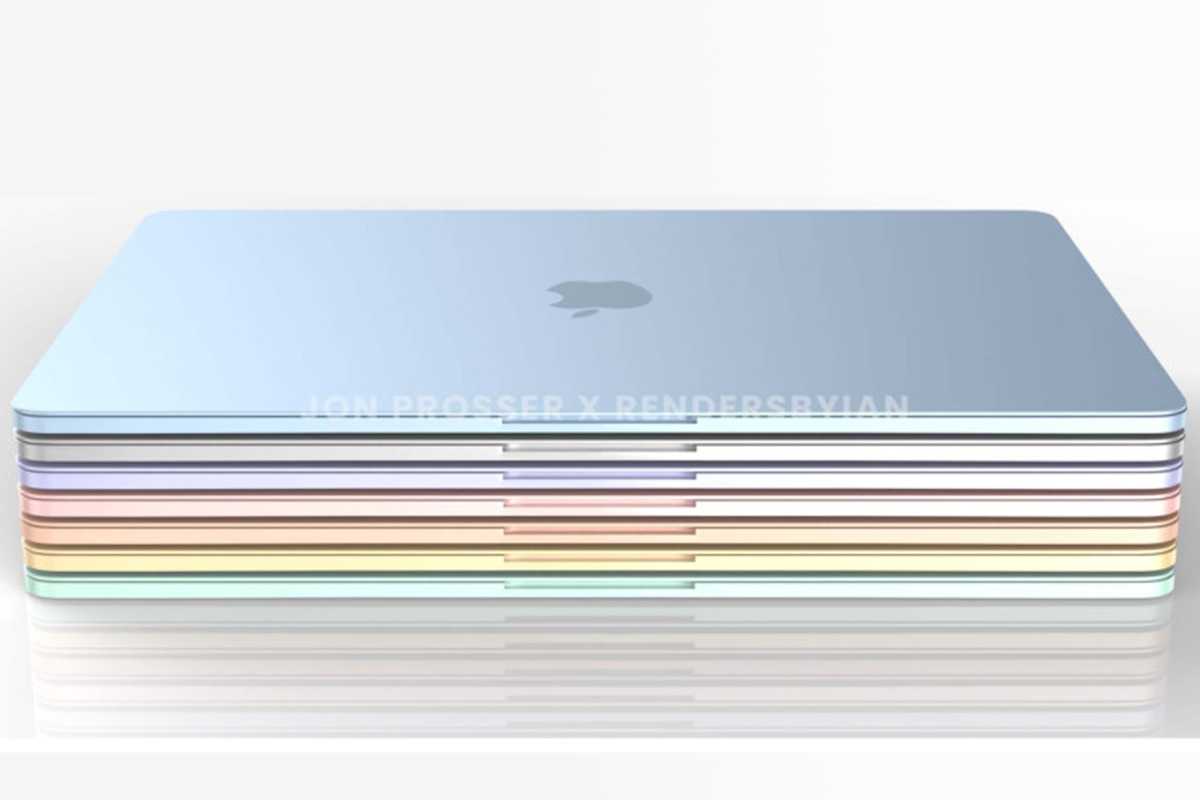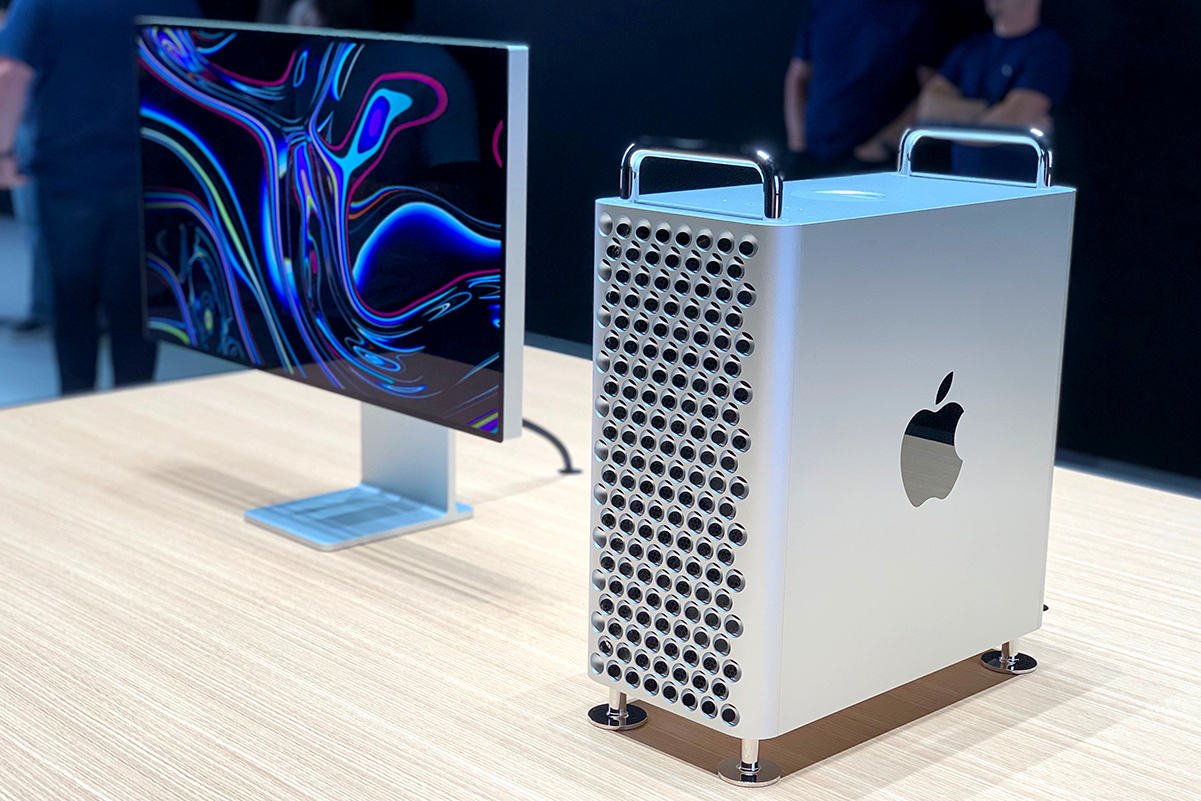When Apple released the M1 chip at the end of last year, two things were clear: Macs were a whole lot faster and the future was incredibly bright. Now, nearly a year later Apple is ready to unveil the next step at its “Unleashed” event on October 18. Apple has already updated its entire lineup of consumer-level Macs with the M1 chip in the MacBook Air, 13-inch MacBook Pro, Mac mini, and 24-inch iMac and there has been no shortage of rumors about the next round of Apple silicon-based Macs. Here’s what we expect to see.
M1: December 2020
Apple’s current M1 processor is based on the 5nm A14 chip the first arrived in the iPad Air and later the iPhone 12. It has 4 high-performance cores with 192 KB of L1 instruction cache and 128 KB of L1 data cache and shared 12 MB L2 cache and 4 energy-efficient cores with 128 KB of instruction cache, 64 KB of L1 data cache, and shared 4 MB L2 cache. That makes a total of 8 cores split evenly among power and efficiency leading to tremendous speed boosts over the prior models. The system-on-a-chip also has an 8-core GPU in most models (the entry-level MacBook Air and 24-inch iMac have a 7-core GPU) with 128 execution units and up to 24576 concurrent threads.
 https://b2c-contenthub.com/wp-content/uploads/2021/06/m1-chip-features.jpg?resize=300%2C200&quality=50&strip=all 300w, https://b2c-contenthub.com/wp-content/uploads/2021/06/m1-chip-features.jpg?resize=768%2C512&quality=50&strip=all 768w, https://b2c-contenthub.com/wp-content/uploads/2021/06/m1-chip-features.jpg?resize=1200%2C800&quality=50&strip=all 1200w, https://b2c-contenthub.com/wp-content/uploads/2021/06/m1-chip-features.jpg?resize=1536%2C1024&quality=50&strip=all 1536w, https://b2c-contenthub.com/wp-content/uploads/2021/06/m1-chip-features.jpg?resize=2048%2C1365&quality=50&strip=all 2048w, https://b2c-contenthub.com/wp-content/uploads/2021/06/m1-chip-features.jpg?resize=1240%2C826&quality=50&strip=all 1240w, https://b2c-contenthub.com/wp-content/uploads/2021/06/m1-chip-features.jpg?resize=150%2C100&quality=50&strip=all 150w" width="1200" height="800" sizes="(max-width: 1200px) 100vw, 1200px" />
https://b2c-contenthub.com/wp-content/uploads/2021/06/m1-chip-features.jpg?resize=300%2C200&quality=50&strip=all 300w, https://b2c-contenthub.com/wp-content/uploads/2021/06/m1-chip-features.jpg?resize=768%2C512&quality=50&strip=all 768w, https://b2c-contenthub.com/wp-content/uploads/2021/06/m1-chip-features.jpg?resize=1200%2C800&quality=50&strip=all 1200w, https://b2c-contenthub.com/wp-content/uploads/2021/06/m1-chip-features.jpg?resize=1536%2C1024&quality=50&strip=all 1536w, https://b2c-contenthub.com/wp-content/uploads/2021/06/m1-chip-features.jpg?resize=2048%2C1365&quality=50&strip=all 2048w, https://b2c-contenthub.com/wp-content/uploads/2021/06/m1-chip-features.jpg?resize=1240%2C826&quality=50&strip=all 1240w, https://b2c-contenthub.com/wp-content/uploads/2021/06/m1-chip-features.jpg?resize=150%2C100&quality=50&strip=all 150w" width="1200" height="800" sizes="(max-width: 1200px) 100vw, 1200px" />Apple
Memory has also changed. With the M1, the LP-DDR4 memory isn’t just soldered to the motherboard, it’s actually part of the chip itself. That means it’s faster and more efficient than before, but it’s also a bit more limited—you can only get 8GB or 16GB in an M1 Mac and there’s no way to upgrade it after purchase. (That won’t be a surprise for MacBook buyers but the same unfortunately applies to desktop models.) And finally, the chip has a 16-core Neural Engine, along with the Secure Enclave and USB4/Thunderbolt support.
MacBook Air (M1, 2020)
 https://b2c-contenthub.com/wp-content/uploads/2021/03/macbook-air-m1.jpg?resize=300%2C200&quality=50&strip=all 300w, https://b2c-contenthub.com/wp-content/uploads/2021/03/macbook-air-m1.jpg?resize=768%2C512&quality=50&strip=all 768w, https://b2c-contenthub.com/wp-content/uploads/2021/03/macbook-air-m1.jpg?resize=1200%2C800&quality=50&strip=all 1200w, https://b2c-contenthub.com/wp-content/uploads/2021/03/macbook-air-m1.jpg?resize=1536%2C1024&quality=50&strip=all 1536w, https://b2c-contenthub.com/wp-content/uploads/2021/03/macbook-air-m1.jpg?resize=2048%2C1365&quality=50&strip=all 2048w, https://b2c-contenthub.com/wp-content/uploads/2021/03/macbook-air-m1.jpg?resize=1240%2C826&quality=50&strip=all 1240w, https://b2c-contenthub.com/wp-content/uploads/2021/03/macbook-air-m1.jpg?resize=150%2C100&quality=50&strip=all 150w" sizes="(max-width: 300px) 100vw, 300px" />
https://b2c-contenthub.com/wp-content/uploads/2021/03/macbook-air-m1.jpg?resize=300%2C200&quality=50&strip=all 300w, https://b2c-contenthub.com/wp-content/uploads/2021/03/macbook-air-m1.jpg?resize=768%2C512&quality=50&strip=all 768w, https://b2c-contenthub.com/wp-content/uploads/2021/03/macbook-air-m1.jpg?resize=1200%2C800&quality=50&strip=all 1200w, https://b2c-contenthub.com/wp-content/uploads/2021/03/macbook-air-m1.jpg?resize=1536%2C1024&quality=50&strip=all 1536w, https://b2c-contenthub.com/wp-content/uploads/2021/03/macbook-air-m1.jpg?resize=2048%2C1365&quality=50&strip=all 2048w, https://b2c-contenthub.com/wp-content/uploads/2021/03/macbook-air-m1.jpg?resize=1240%2C826&quality=50&strip=all 1240w, https://b2c-contenthub.com/wp-content/uploads/2021/03/macbook-air-m1.jpg?resize=150%2C100&quality=50&strip=all 150w" sizes="(max-width: 300px) 100vw, 300px" />M1 Pro and M1 Max—October 2021
We started hearing about the development of an M1X chip earlier this year, but the rumors weren’t quite accurate. Apple is calling its next-gen processors the M1 Pro and M1 Max, and true to their names, they are a massive leap over the M1.
Built using the same 5nm process as the M1, the M1 Pro and M1 Max bring a new 10-core CPU, including eight high-performance cores and two high-efficiency cores, that delivers speeds up to 70 percent faster than the M1. The M1 Pro offers up to 200GB/s of memory bandwidth with support for up to 32GB of unified memory while the M1 Max delivers up to 400GB/s of memory bandwidth with support for up to 64GB of unified memory.
On the graphics side, the M1 Pro has a 14-core or 16-core GPU that is up to 2x faster than M1, while the M1 Max adds a 32-core GPU options for up to 4x faster graphics performance than M1. According to Apple, the new M1 Max MacBook Pro can transcode ProRes video in Compressor up to 10x faster compared with the Intel 16-inch MacBook Pro.
Additionally, the chips also have a 16-core Neural Engine, additional Thunderbolt 4 controllers, and a new display engine that can drive up to four external displays on the M1 Max.
16-inch MacBook Pro (2021)
 https://b2c-contenthub.com/wp-content/uploads/2021/10/MacBook-Pro.png?resize=300%2C200&quality=50&strip=all 300w, https://b2c-contenthub.com/wp-content/uploads/2021/10/MacBook-Pro.png?resize=768%2C512&quality=50&strip=all 768w, https://b2c-contenthub.com/wp-content/uploads/2021/10/MacBook-Pro.png?resize=1200%2C800&quality=50&strip=all 1200w, https://b2c-contenthub.com/wp-content/uploads/2021/10/MacBook-Pro.png?resize=1536%2C1024&quality=50&strip=all 1536w, https://b2c-contenthub.com/wp-content/uploads/2021/10/MacBook-Pro.png?resize=2048%2C1365&quality=50&strip=all 2048w, https://b2c-contenthub.com/wp-content/uploads/2021/10/MacBook-Pro.png?resize=1240%2C826&quality=50&strip=all 1240w, https://b2c-contenthub.com/wp-content/uploads/2021/10/MacBook-Pro.png?resize=150%2C100&quality=50&strip=all 150w" sizes="(max-width: 300px) 100vw, 300px" />
https://b2c-contenthub.com/wp-content/uploads/2021/10/MacBook-Pro.png?resize=300%2C200&quality=50&strip=all 300w, https://b2c-contenthub.com/wp-content/uploads/2021/10/MacBook-Pro.png?resize=768%2C512&quality=50&strip=all 768w, https://b2c-contenthub.com/wp-content/uploads/2021/10/MacBook-Pro.png?resize=1200%2C800&quality=50&strip=all 1200w, https://b2c-contenthub.com/wp-content/uploads/2021/10/MacBook-Pro.png?resize=1536%2C1024&quality=50&strip=all 1536w, https://b2c-contenthub.com/wp-content/uploads/2021/10/MacBook-Pro.png?resize=2048%2C1365&quality=50&strip=all 2048w, https://b2c-contenthub.com/wp-content/uploads/2021/10/MacBook-Pro.png?resize=1240%2C826&quality=50&strip=all 1240w, https://b2c-contenthub.com/wp-content/uploads/2021/10/MacBook-Pro.png?resize=150%2C100&quality=50&strip=all 150w" sizes="(max-width: 300px) 100vw, 300px" />M2—2022
Apple’s M2 chip will likely arrive in the next MacBook Air, which looks to get a complete redesign with new colors to match the 24-inch iMac. According to Bloomberg, Apple’s next-generation processor “will include the same number of computing cores as the M1 but run faster.” That’s similar to how Apple approaches A-series upgrades, which has had six cores since the A11 processor despite vastly improved performance. As far as the GPU goes, Bloomberg reports that the cores will increase from seven or eight to nine or 10.
 https://b2c-contenthub.com/wp-content/uploads/2021/05/prosser-macbook-colors.jpg?resize=300%2C200&quality=50&strip=all 300w, https://b2c-contenthub.com/wp-content/uploads/2021/05/prosser-macbook-colors.jpg?resize=768%2C512&quality=50&strip=all 768w, https://b2c-contenthub.com/wp-content/uploads/2021/05/prosser-macbook-colors.jpg?resize=1200%2C800&quality=50&strip=all 1200w, https://b2c-contenthub.com/wp-content/uploads/2021/05/prosser-macbook-colors.jpg?resize=1536%2C1024&quality=50&strip=all 1536w, https://b2c-contenthub.com/wp-content/uploads/2021/05/prosser-macbook-colors.jpg?resize=2048%2C1365&quality=50&strip=all 2048w, https://b2c-contenthub.com/wp-content/uploads/2021/05/prosser-macbook-colors.jpg?resize=1240%2C826&quality=50&strip=all 1240w, https://b2c-contenthub.com/wp-content/uploads/2021/05/prosser-macbook-colors.jpg?resize=150%2C100&quality=50&strip=all 150w" width="1200" height="800" sizes="(max-width: 1200px) 100vw, 1200px" />
https://b2c-contenthub.com/wp-content/uploads/2021/05/prosser-macbook-colors.jpg?resize=300%2C200&quality=50&strip=all 300w, https://b2c-contenthub.com/wp-content/uploads/2021/05/prosser-macbook-colors.jpg?resize=768%2C512&quality=50&strip=all 768w, https://b2c-contenthub.com/wp-content/uploads/2021/05/prosser-macbook-colors.jpg?resize=1200%2C800&quality=50&strip=all 1200w, https://b2c-contenthub.com/wp-content/uploads/2021/05/prosser-macbook-colors.jpg?resize=1536%2C1024&quality=50&strip=all 1536w, https://b2c-contenthub.com/wp-content/uploads/2021/05/prosser-macbook-colors.jpg?resize=2048%2C1365&quality=50&strip=all 2048w, https://b2c-contenthub.com/wp-content/uploads/2021/05/prosser-macbook-colors.jpg?resize=1240%2C826&quality=50&strip=all 1240w, https://b2c-contenthub.com/wp-content/uploads/2021/05/prosser-macbook-colors.jpg?resize=150%2C100&quality=50&strip=all 150w" width="1200" height="800" sizes="(max-width: 1200px) 100vw, 1200px" />The colorful redesign of the MacBook AIr could be the first M2 machine.
We don’t know yet how speeds compare, but based on previous chips, we can expect the M2 processor to actually be a bit slower than the M1X chip. The same limitations on USB4/Thunderbolt and RAM will likely remain as well since Apple is establishing non-X chips as consumer products for users who aren’t as demanding.
M2 Pro and M2 Max—Late 2022
According to reports, Apple is planning an even higher-end chip for the Mac Pro and possibly a larger iMac. The chip will likely have several tiers of performance, which could “come in 20 or 40 computing core variations, made up of 16 high-performance or 32 high-performance cores and four or eight high-efficiency cores,” according to a Bloomberg report. The workstation-caliber chip is also rumored to have 64 core or 128 core options for graphics, which would replace the AMD GPUs in current models. Those specs are comparable to what Intel and AMD offer in their top-of-the-line chips and would challenge the fastest PCs, at least on paper.
 https://b2c-contenthub.com/wp-content/uploads/2021/05/mac-pro-2019-and-pro-display-xd.jpg?resize=300%2C200&quality=50&strip=all 300w, https://b2c-contenthub.com/wp-content/uploads/2021/05/mac-pro-2019-and-pro-display-xd.jpg?resize=768%2C512&quality=50&strip=all 768w, https://b2c-contenthub.com/wp-content/uploads/2021/05/mac-pro-2019-and-pro-display-xd.jpg?resize=150%2C100&quality=50&strip=all 150w" width="1024" height="683" sizes="(max-width: 1024px) 100vw, 1024px" />
https://b2c-contenthub.com/wp-content/uploads/2021/05/mac-pro-2019-and-pro-display-xd.jpg?resize=300%2C200&quality=50&strip=all 300w, https://b2c-contenthub.com/wp-content/uploads/2021/05/mac-pro-2019-and-pro-display-xd.jpg?resize=768%2C512&quality=50&strip=all 768w, https://b2c-contenthub.com/wp-content/uploads/2021/05/mac-pro-2019-and-pro-display-xd.jpg?resize=150%2C100&quality=50&strip=all 150w" width="1024" height="683" sizes="(max-width: 1024px) 100vw, 1024px" />Apple is reportedly developing a new Mac Pro with an incredibly powerful custom chip inside.
IDG
Apple could very well call this chip the M2X, but since the Mac Pro processor would represent such a big jump from even the rumored chips, it will likely be separated from the pack with a whole new naming system. (Apple has previously used the “Z” identifier on chips to indicate improved graphics performance.) Mark Gurman reported that the next iMac will likely use the M1X or M2X chip in the next iMac, but it’s not clear if he’s referring to this chip or a lower-powered M2 variant.
It’s also possible that Apple pairs two M1X chips inside the Mac Pro to boost performance, a tactic it last used with the Power Mac G4 back in 2001. But however Apple plans to go about it, expect the new Mac Pro to bring tremendous speed that blows away today’s model and caters to ultra-high computing demands. This chip and machine won’t be for mere mortals.





